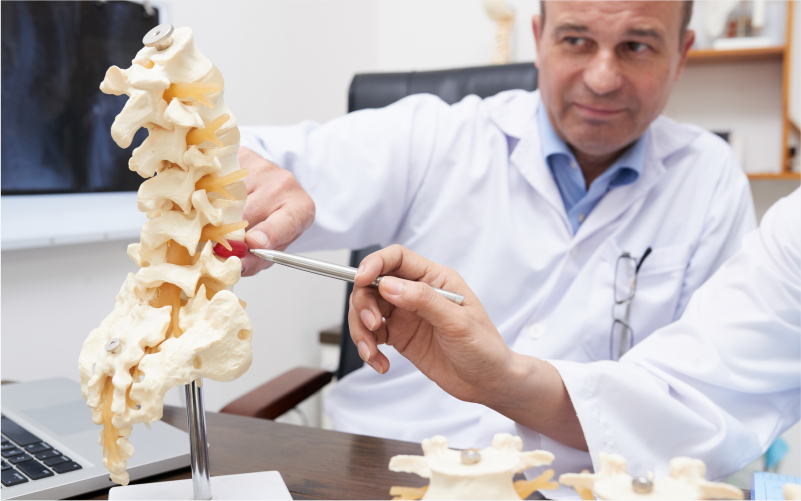Introduction
Bone loss, also known as osteoporosis, is a condition characterized by a reduction in bone density, making the bones more fragile and susceptible to fractures. This occurs when the creation of new bone doesn’t keep up with the removal of old bone tissue. Bone loss is a common part of aging, and while it affects both men and women, postmenopausal women are particularly at risk. However, with proper management and lifestyle changes, individuals can mitigate the impact of bone loss.

Symptoms of Bone Loss
Fractures: Increased susceptibility to fractures, especially in the hip, spine, and wrist, even from minor falls.
Back Pain: Compression fractures in the spine may cause back pain and a stooped posture.
Loss of Height: Over time, bone loss in the spine can lead to a gradual loss of height.
Brittle Nails: Weakened and brittle nails may be a sign of decreased bone density.
Diagnosis of Bone Loss
Bone Density Test (DEXA scan): This specialized X-ray measures bone mineral density and helps diagnose osteoporosis.
Medical History and Physical Examination: The doctor assesses risk factors, reviews medical history, and performs a physical examination to identify signs of bone loss.
Blood Tests: Blood tests may be conducted to measure calcium and vitamin D levels, as well as check for underlying conditions affecting bone health.
Treatment of Bone Loss
Medications: Various medications, including bisphosphonates, hormone therapy, and denosumab, may be prescribed to slow down bone loss and reduce fracture risk.
Calcium and Vitamin D Supplements: Adequate calcium and vitamin D intake is essential for maintaining bone health.
Lifestyle Modifications: Regular weight-bearing exercise, such as walking or weightlifting, helps build and strengthen bones.
Balanced Diet: A diet rich in calcium and other essential nutrients supports bone health. Foods like dairy products, leafy greens, and fortified foods are beneficial.
Avoiding Smoking and Excessive Alcohol: Smoking and excessive alcohol consumption can contribute to bone loss, so quitting smoking and moderating alcohol intake are recommended.
Precautions and Lifestyle
Fall Prevention: Taking measures to prevent falls, such as removing tripping hazards and using handrails, can reduce the risk of fractures.
Regular Check-ups: Regular follow-ups with healthcare providers to monitor bone density and adjust treatment plans if necessary.
Bone-Healthy Habits: Adopting a bone-healthy lifestyle, including a balanced diet, regular exercise, and maintaining a healthy weight.
Educational Support: Seeking information and support from healthcare professionals, support groups, or educational resources to understand and manage bone loss effectively.
Understanding and managing bone loss require a holistic approach involving medical intervention, lifestyle adjustments, and preventive measures. Individuals experiencing symptoms or at risk of bone loss should consult with healthcare professionals for a comprehensive evaluation and personalized guidance.







